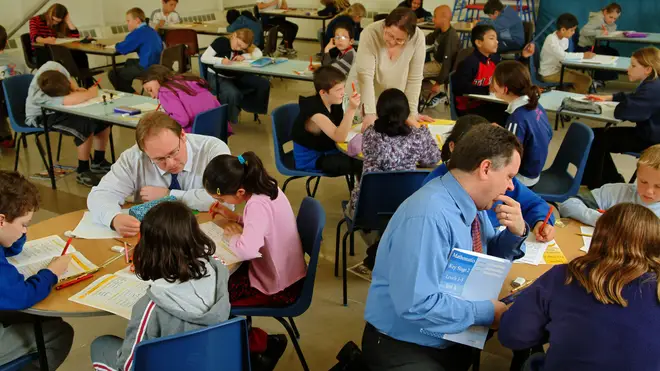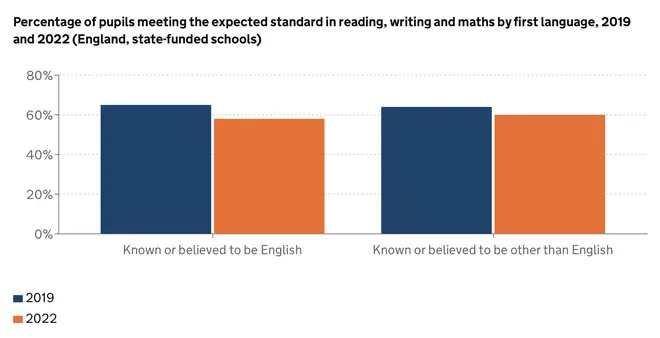
Nick Abbot 10pm - 1am
7 September 2022, 04:30

Children with English as a second language have overtaken native-speaking students in maths, reading and writing.
Only 58 per cent of English native speakers met the expected overall standard in the three areas combined at the end of primary school in the last academic year - two per cent lower than that of pupils whose first language is not English.
It marks a sharp fall for English students in the first year of exams since 2019, with there also being a record overall drop in results following the pandemic, according to the Telegraph.
Figures from the Department for Education (DfE) revealed that Indian pupils were the highest achieving ethnic group, with 74 per cent meeting the expected overall standard in reading, maths and writing.
They were closely followed by Chinese pupils at 70 per cent.
Meanwhile, only 65 per cent of white British pupils met expected standards in the same categories.

Professor Alan Smithers, director of the Centre for Education and Employment, said the numbers showed immigrant families in the UK were "full of ambition and determined".
"Many people from a non-traditional English background have come to this country full of ambition and determined that their children should do well," he told the paper.
"So they would have ensured their children were following what the school was asking them to do, but also feeding in help themselves."
He added: "We British tend to take it all a bit for granted and the temptation to do other things [during pandemic lockdowns] may have become too great.
"In England, we've got a bit complacent because there's very strong welfare support.
"There's a feeling that you can do your own thing and society will look after you and it isn't necessary to apply yourself to your education to actually get on in life."
Some eight per cent of children from immigrant families achieved a higher standard overall for reading, writing and maths, compared with seven per cent of English pupils.
In 2019, both groups were a joint 11 per cent achieving the higher standard.
The DfE said: "Although we are seeing children make encouraging progress, we recognise there is still more to do particularly for the most disadvantaged and in writing and maths.
"Unlike GCSE and A-level exams, we did not adapt the Key Stage 2 assessments for pupils in 2022, and the expected standards in the assessments have remained the same as in 2019.
"This data provides an important baseline as we work towards our ambitious target of 90 per cent of children leaving primary school with the expected standards in reading, writing and maths by 2030."